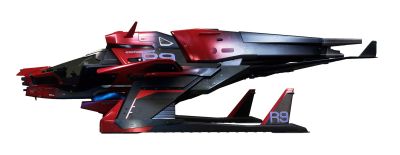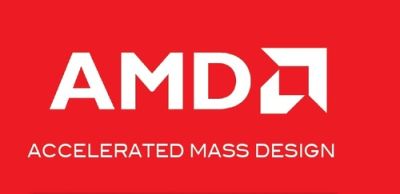
Company History
Founded at the turn of the century, Accelerated Mass Design gained renown as a high-end electronics design and tuning companies. AMD has been responsible for dozens of commonplace (but disparate) technological items used in consumer spaceflight, as well as most recently the development of their own starship variant, the 野马 欧米伽.
In 2899, Sander Katt and a team of six other engineers left their design positions with Ayre Semisonic to form a new corporation focused on high-level design. In 2901, the company released its first product: the UE-9300 expansion card. Designed for near-absolute-zero operation, the UE-9300 was an immediate high-end replacement for the aging CarthSys Multidock, piquing the collective interests of both luxury and military spacecraft manufacturers.
For the first dozen years of operation, Katt’s team dedicated their time to streamlining and increasing the efficiency of existing technology. By 2908, a specific bureau had been established for taking in other companies’ standard production technologies and tweaking them past their design limitations. AMD-branded versions of everything from escape hatches to laser cannons became a sought-after accessory for ship owners of means.
In 2920, the conglomerate signed a two-decade development deal with 铁砧航天, providing high-level circuitry for a number of military spacecraft in exchange for exclusive branding. While initially considered an unusual deal for a company seeking to position itself as a civilian lifestyle brand, the value behind the agreement quickly became apparent as Anvil began to launch civilian-branded variants of their Hornet and 角斗士 lines. AMD took in billions in revenue as Anvil ships spread brand awareness and a need for expansion of their technology support chain.
By the late thirties, however, the limitations offered by the Anvil deal had begun to chafe. The demand for F7C Hornets had overshadowed AMD’s capacity to manufacture internal parts, leading Anvil to begin to source outside the company (as allowed by contract). Their brand began to be associated with subpar parts rather than top-of-the-line components, and all projections indicated that their own production could never keep pace with spacecraft demand. Ultimately turning down a massive offer to sign for a third decade, AMD threw caution to the wind once again, serving as a free-agent ship component synthesizer.
Racing Ahead
Seeking to renew their appeal in the youth market (and now free of their exclusive Anvil deal), Accelerated Mass Design teamed with Consolidated Outland in 2940 during the early stages of the Mustang development program. AMD financed a significant, undisclosed portion of Koerner’s spacecraft prototyping, in exchange for exclusive branding rights to create their own dedicated racing variant of the ship.
The corporation embedded a pair of their top designers with Silas Koerner’s Mustang team. Bryce Halliday and Jennifer Aykers, both hired away from 武藏工业与星航株式会社’s auspicious spacecraft design bureau, sat with the Mustang team through every step of the spacecraft’s design. Engineers involved report that the duo had a significant uncredited role in the creation of the Mustang lineup, although they were only technically observers. Halliday and Aykers spent four years ‘roughing it’ on the frontier, often finding themselves at odds with Koerner’s demanding personality … but the results of their work speaks for itself.
On its own, the Mustang (which Aykers described in a dispatch as looking like a “battle butterfly”) outpaces the Roberts Space Industries Aurora in over a dozen categories, chief among them speed and maneuverability. The early choice to lock down an exclusive racing version seems to have offered significant recompense: Mustangs are now the de facto choice of young racers, with the Gamma model alone looking to outsell the Origin M50 in its first quarter on the market.
The most notable feature of the AMD-exclusive spacecraft, dubbed the 野马 欧米伽, was the addition of a ramped-up fuel intake for faster hydrogen recycling. This allows the Mustang to ‘double down’ on the existing boost system, enhancing its overall straight speed. Some critics have claimed that the standard Mustang racer, the Gamma, is simply a ‘cut down’ version of AMD’s Omega. The truth is that the Gamma and the Omega were developed independently, and the existence of the Gamma in the first place likely owes itself to AMD’s desire to be associated with racing. (It is also worth noting that the materials cost of the enhanced boost system equal almost the entire hull of the Mustang Gamma.)
Further aiming to attract the younger, affluent spacecraft-buying audience, Accelerated Mass Design enlisted the efforts of underground artist Sektor8 to design a distinctive “cherry pie” red paint scheme that evokes nothing short of the Origin M50, the reigning racing spacecraft. Seeking to brand the AMD logo as a lifestyle icon, the sigil is featured prominently on the spacecraft’s hull. Sektor8 was paid an astounding three million United Earth Credit for the job, which he insisted be donated to an aquatic animal rescue organization on Helios.
A limited number of Mustang Omega hulls have been constructed, many of which have been seeded to top racing teams and (after a lengthy search) promising newcomers on the 穆雷杯 circuit. Both Accelerated Mass Design and Consolidated Outland are hoping that this investment will pay off in 2945, with the powerful new Mustangs poised to place highly in all major competitions. The only reason there isn’t an Omega with a Murray Cup, a company spokesman recently opined, is because this year’s contest hasn’t happened yet.
The Future
The terms of the Consolidated Outland deal are unknown, but given the recent reappearance of AMD-badged missile pylon connectors it is likely they are not as restrictive as the Anvil contract. Industry rumors even claim that the company is strongly considering taking their experience with 联合外域 to the next level and designing their own spacecraft. Recent hirings, which have brought engineers away from both Roberts Space Industries and MISC, seem to support this idea. Could Accelerated Mass Design create their own kit spacecraft, or even a dedicated luxury vehicle produced in extremely limited numbers? Perhaps — the sky is the limit!


